$270 million Honolulu airport concourse set to open
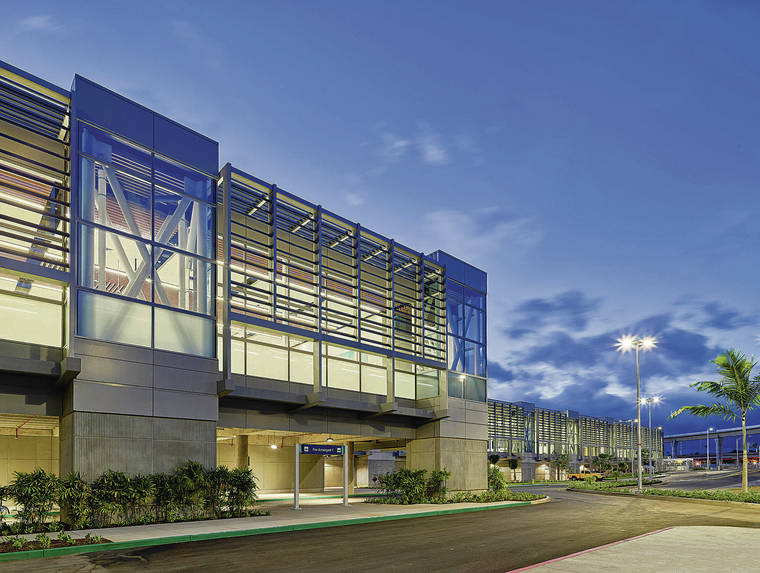
COURTESY KYA DESIGN GROUP
The recently completed Mauka Concourse at Daniel K. Inouye International Airport will open to travelers on Friday. The new concourse adds 12 gates and six new lanes for TSA security checks.

COURTESY KYA DESIGN GROUP
The recently completed Mauka Concourse at Daniel K. Inouye International Airport was designed without walls to allow travelers to spread out at the gates. Officials say the expansion will help relieve congestion at the airport.
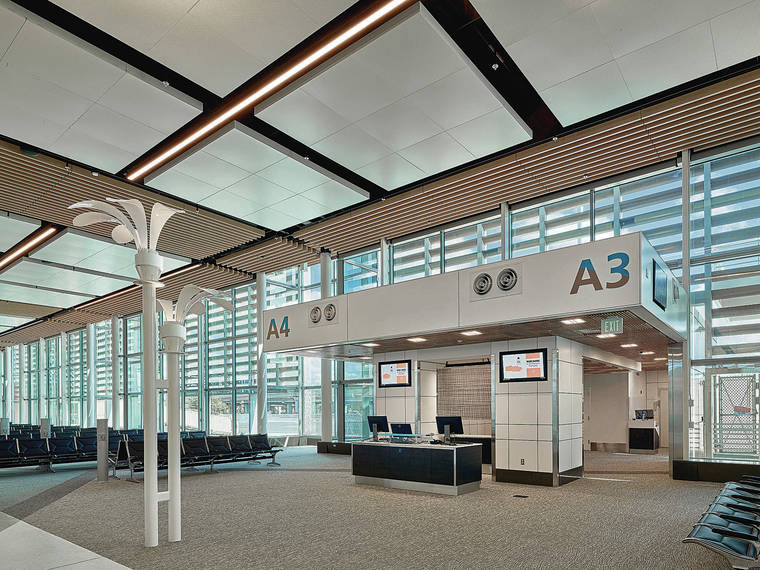
COURTESY KYA DESIGN GROUP
The recently completed Mauka Concourse at Daniel K. Inouye International Airport will open to travelers on Friday. The new concourse adds 12 gates and six new lanes for TSA security checks.
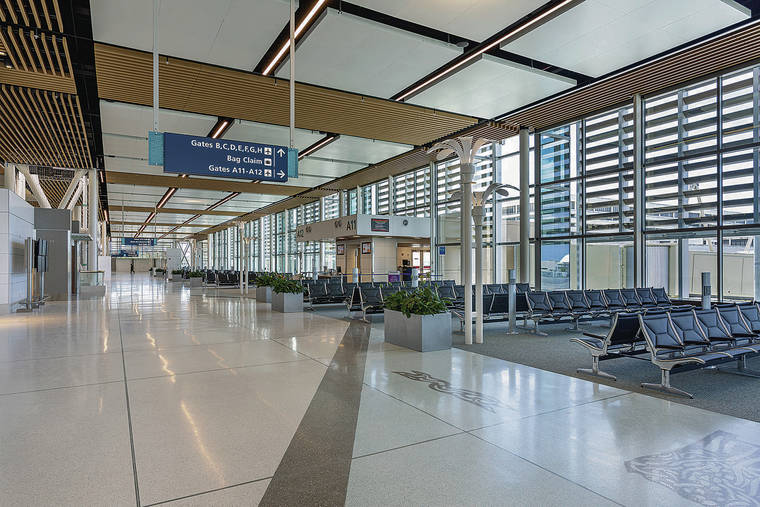
COURTESY KYA DESIGN GROUP
The recently completed Mauka Concourse at Daniel K. Inouye International Airport was designed without walls to allow travelers to spread out at the gates. Officials say the expansion will help relieve congestion at the airport.
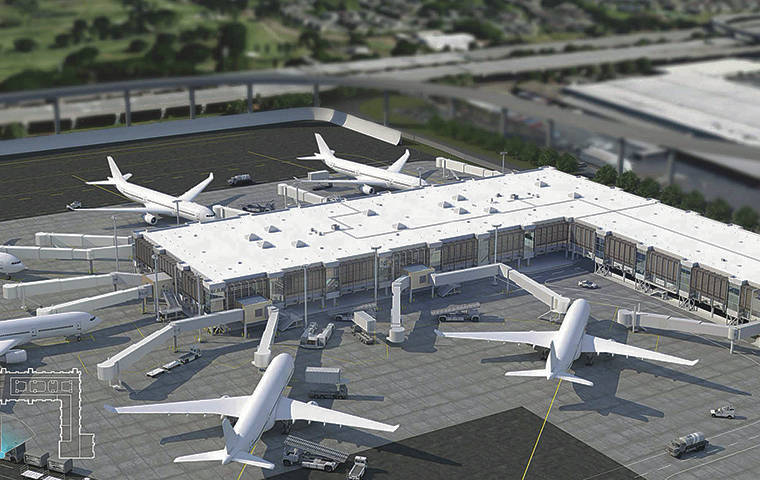
COURTESY KYA DESIGN GROUP
An artist’s rendering shows the new Mauka Concourse, which adds 12 gates at the Honolulu airport.
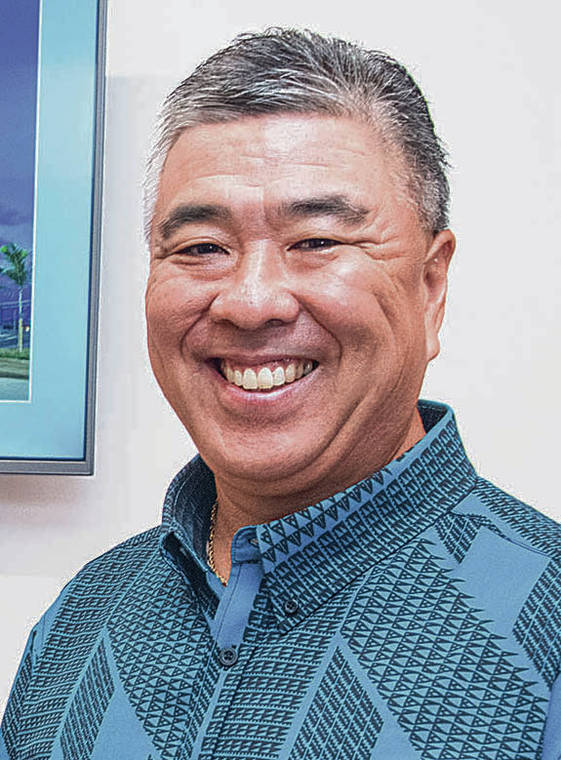
STAR-ADVERTISER
Ross Higashi:
The Department of Transportation Airports Division deputy director says the state’s $2.6 billion airport modernization project is about 95% complete






The opening of the new $270 million Mauka Concourse at Daniel K. Inouye International Airport Friday marks the first gate expansion in nearly three decades.
Department of Transportation Airports Division Deputy Director Ross Higashi told the Honolulu Star-Advertiser on Monday that “The Mauka Concourse will soon become part of Hawaii airport history. The last time a major terminal was built was back in 1993.”
Higashi said the 230,000-square-foot Mauka Concourse can accommodate up to 11 aircraft at any given time, alleviating the gate pressure that Daniel K. Inouye International Airport faces each day between 10 a.m. and 3 p.m.
“The other day certainly brought goose bumps to my skin, as the Hawaiian Airlines Neo A321 jet taxied on the newly paved taxiway into gate A1 to perform the gate fit test, an indication that the concourse will be opening soon,” he said. “We are excited and can’t wait to open the concourse to the public on (Friday).”
In addition to reducing congestion at peak travel times, the gate expansion adds six new Transportation Security Administration lanes. That will bring the total number of checkpoint lanes in Terminal 1 to 10, allowing passengers to get through entry lines more quickly, and in less-crowded conditions. KYA Design Group also designed the space without walls so that passengers can spread out at the gate while waiting for their planes, and to allow the airports division future flexibility.
Hawaiian Airlines, Hawaii’s homegrown carrier, will be the first carrier to use the gates.
Don't miss out on what's happening!
Stay in touch with breaking news, as it happens, conveniently in your email inbox. It's FREE!
Hawaiian Airlines spokesman Alex Da Silva said, “The Mauka Concourse will offer an improved experience for kamaaina travelers and visitors, our employees and all other airport users.
“In addition to helping relieve congestion at HNL, the concourse’s modern and versatile gates can accommodate both our narrow-body and wide-body aircraft, which brings more flexibility and efficiency across our neighbor island and trans-Pacific operations and ultimately benefits travelers.”
Eventually, when tourism begins to normalize, Higashi said the expansion could help the state’s largest airport accommodate more flights and passengers.
Before the pandemic, Higashi said an average of 20 million passengers annually board and exit planes in Honolulu, which made up about 57% of the 37 million passengers that move through planes at the state’s 15 airports.
Adding capacity
Guy Ichinotsubo, engineering project manager for DOT Airports Division, said the Mauka Concourse adds 12 gates at the Honolulu airport, where the gate count will increase by 28% to 54.
Higashi said when it’s appropriate the state could try to grow overall flight capacity statewide by searching for carriers that are willing to operate outside of the peak operational period. Adding more flights means greater economic impact, he said.
However, not all Hawaii residents are convinced that the benefits of more tourism will outweigh the costs. Anti-tourism pushback has come recently from those who fear that Hawaii has more visitors than it can handle, especially during the pandemic.
On Monday, Gov. David Ige asked travelers to postpone trips to Hawaii through at least October. Ige’s request, which wasn’t mandated by an order, was mostly predicated by the critical strain that the recent COVID-19 surge has put on Hawaii’s health care facilities. Ige also referenced the likelihood that travelers to Hawaii would have a downgraded experience given pandemic-related limits on large gatherings, reduced restaurant capacity and rental car shortages.
Still, the opening of the Mauka Concourse is expected to give travelers an improved Honolulu airport experience.
Higashi said less congestion means more opportunity for travelers to spread out and “less wait times at checkpoints and less chance of flight delays.”
The opening of the Mauka Concourse also should improve the current 12 to 15 minute average wait in TSA lines, he said.
Higashi said the project, which was originally expected to open in November 2020, and others before it completes about 95% of the state’s $2.6 billion airport modernization project. More projects are pending; however, he said that the only major project left in this cycle is the $360 million Honolulu Consolidated Rental Car Facility (CONRAC). The 370,000-square-feet facility is expected to deliver 4,500 rental car stalls when it opens to the public in April.
Ichinotsubo said construction on the Mauka Concourse started about three years ago but was delayed due to the detection of contaminated materials and utility conflicts. The pandemic did not affect construction of the Mauka Concourse much, he said.
But Higashi said the pandemic did cause some of the state’s retail and food and beverage partners to delay build-out of the spaces that they intend to occupy at the Mauka Concourse. He said the concourse will open with a Pages & Pages blind-vendor operated store, which soon will be joined by a pop-up doughnut shop and bar operated by HMS Host. Additional food and beverage and retail options will be added later, Higashi said.
More art is also expected, although a display dedicated to the late U.S. Sen. Daniel K. Inouye, for whom the airport is named, is already up.
Higashi said the project was completed because of “constant oversight, dedication and ownership” from the state Department of Transportation — Airports Division engineering team headed by Ichinotsubo, Val Sasugu and Nathan Kaneshige, “all of whom spent countless hours sacrificing weekends and family time.”
“I compare the completion of this concourse to winning a major bowl game. It doesn’t happen all the time,” he said. “The completion of this successful project, again, successful because of the the team that I just mentioned, is a big win for our traveling public and the airlines serving this project. Hawaii is a preferred destination choice, and this concourse is definitely needed.”
Higashi also recognized KYA; the project’s construction manager AECOM; its general contractor Hensel Phelps; and the Airlines Committee of Hawaii — all of whom “worked collaboratively with the State Airports Team to build this aesthetically pleasing and modernized concourse.”
Eye on sustainability
Ichinotsubo said sustainability was an important consideration for the Mauka Concourse, which is pursuing an environmental designation from the U.S. Green Building Council.
“Overall, sustainability is just the right thing to do, especially for an island state like Hawaii where we just need to try to preserve our limited resources for future generations,” he said.
Carol Torigoe, KYA president and CEO, said a key part of the project’s sustainability was the use of eco-shafts, which serve as the main structural framing and eliminated the need for interior walls.
Torigoe said the ventilation shafts bring air-conditioned air from mechanical rooms located on the ground level in lieu of being located on the rooftops. That’s important because it provides a way to cool passengers without cooling the entire space, she said.
Torigoe said the shafts also bring in natural daylight and serve as a display case for artwork, including glass beads, resembling water flowing from the mountains to the ocean-colored floor.
“We wanted a clean elegant space that would be quite timeless, but that would be very welcoming and enjoyable for all people of Hawaii and visitors,” she said.
Torigoe said the design maximizes sunshine and offers expansive views.
“We thought there’s no better way to express sense of place than to see the changing skies of Hawaii through the day from early morning sunrise to evening sunlight and moonlight,” she said.
GETTING A FACE-LIFT
The bulk of the state’s $2.6 billion airport modernization project has been completed:
Daniel K. Inouye International Airport: Mauka Concourse
>> Footprint: 230,000 square feet
>> Original cost: $200 million, current cost $270 million
>> Completion: Friday
PENDING PROJECTS:
Daniel K. Inouye International Airport: Honolulu Consolidated Rental Car Facility (CONRAC)
>> Footprint: 370,000 square feet
>> Original cost: $330 million, current cost $360 million
>> Completion: Opening in December, restore public parking in April
Ellison Onizuka Kona International Airport at Keahole: Kona Federal Inspection Services
>> Footprint: 33,000 square feet
>> Original cost: $56 million, current cost $58 million
>> Completion: Sept 2021
Kahului Airport: Holdroom
>> Footprint: Increase existing space by 22,000 square feet to 37,000 square feet
>> Original cost: $38 million, current cost $47 million
>> Completion: 2024
Source: DOT





